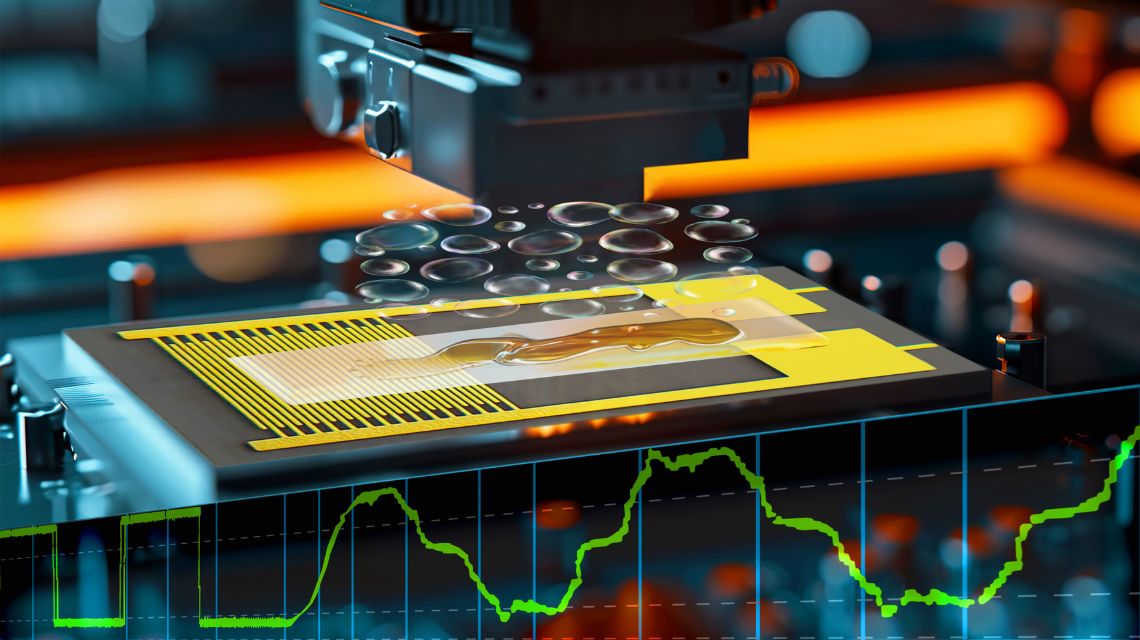Italian National Agency for New Technologies, Energy and Sustainable Economic Development

Research: Innovative sensors to detect gases harmful for humans and the environment
Next generation miniaturized sensors, efficient, low-cost and capable of detecting very low levels of harmful gases thanks to advanced materials [1] are a new frontier of research at a global level - which can be applied to breath analysis for early diagnosis of tumor pathologies, for environmental monitoring, as well as for alcohol tests and safety at work and at home – that was the focus of a scientific review by ENEA and WAS selected for the cover of the magazine “Chemosensors”.
The ENEA review shows that research teams globally are working on the development of increasingly efficient and high-performance, light and portable sensor systems, calibrated for real-time in situ monitoring, with the aim of integrating the most reliable conventional methods and the expensive bulky equipment [2] that often require specialized personnel and complex and prolonged analysis procedures.
“Our scientific review focuses in particular on advanced functional materials and the most promising strategies to develop chemical sensors for volatile alcohols at low concentrations, which are chemical compounds present in many consumer products such as cosmetics, household cleaners, disinfectants, drugs, fuels and beverages”, explained Michele Penza, researcher at the Division of Technologies and Materials for Sustainable Manufacturing of the ENEA Brindisi Research Center and co-author of the study together with Anna Maria Laera at the Laboratory of Smart Components and Systems for Sustainable Manufacturing. “These compounds are flammable and some are particularly harmful, because if ingested or inhaled in high concentrations for prolonged periods, they can cause loss of vision, inflammation of the nose and mucous membranes, respiratory disorders, lung irritation and neurological diseases”, said Penza.
"This study - said first author Anna Maria Laera – aims at providing a useful tool to evaluate and compare the most significant scientific progress in the field of materials and sensors for real-time monitoring of internal and external environments and ensure chemical safety. Currently, the analysis of alcohol in breath is a well established procedure, as the use of portable sensors for ethyl alcohol by law enforcement to combat drunk driving demonstrates. A further application is being studied to diagnose some serious pathologies by measuring butanol, considered a biomarker of lung cancer".
“Low power consumption and the ability to operate at room temperature are additional key factors in the design of next-generation sensor devices to improve safety (considering the flammability of alcohols) and reduce costs, with a view to further extending their use in emerging areas like the Internet of Things (IoT), self-monitoring medical devices and wearable electronics. Functional materials are an enabling technology which plays a key role also for future purposes of environmental sustainability and ecological transition”, concluded Penza.
Notes
[1] Nanostructured metal oxides, organometallic materials, 2D materials (graphene-based materials, graphitic carbon nitride, transition metal chalcogenides, and MXenes), and conducting polymers.
[2] For example: gas chromatography (GC), mass spectrometry, nuclear magnetic resonance, ultraviolet-visible spectroscopy, Fourier transform infrared spectroscopy, Raman spectroscopy.
